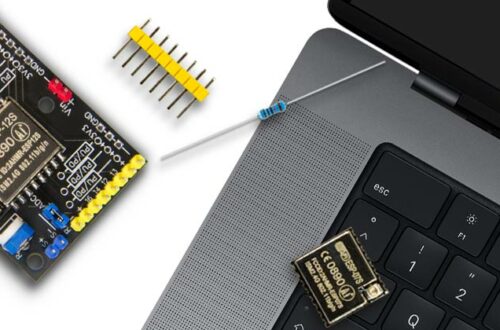|
Pull Up Pull Down Widerstand
Als typische MCU (MikroController Unit) verfügt der ESP8266 über GPIO’s (General Purpose Input/Output). Mit einfachen Worten ein Pin / Kontakt der individuell und anwendungsspezifisch genutzt werden kann, beispielsweise als
Neben den individuell nutzbaren GPIO’s verfügt der ESP8266 auch über folgende GPIO’s die für interne Funktionen benötigt werden beispielsweise
Je nach Verwendung und Funktion eines GPIO bedarf es in der Regel (fast ausnahmslos) eines
und dem jeweiligen GPIO geschaltet wird. Die EI-OT ESP8266 Entwicklerplatine ist dementsprechend vorbereitet um bei Bedarf einen GPIO mit einem notwendigen Widerstand zu beschalten. |
Pull Up Pull Down Widerstand
As a typical MCU (microcontroller unit), the ESP8266 has GPIOs (General Purpose Input/Output). In simple words, a pin / contact that can be used individually and application-specifically, for example as a
In addition to the individually usable GPIO’s, the ESP8266 also has the following GPIO’s that are required for internal functions, for example
Depending on the use and function of a GPIO, usually a
and the respective GPIO is required. The EI-OT ESP8266 developer board is prepared accordingly to connect a GPIO with a resistor if necessary. |
ESP8266 Development Board Pull Up Pull Down Resistor connection  |
Pull Up anschliessen
Bitte stets auf entsprechenden Abstand zwischen Platine und Widerstand achten um einen Kurzschluss zu vermeiden
Pull Down anschliessen
Bitte stets auf entsprechenden Abstand zwischen Platine und Widerstand achten um einen Kurzschluss zu vermeiden
|
Pull Up connection
Bitte stets auf entsprechenden Abstand zwischen Platine und Widerstand achten um einen Kurzschluss zu vermeiden
Pull Down connection
|




